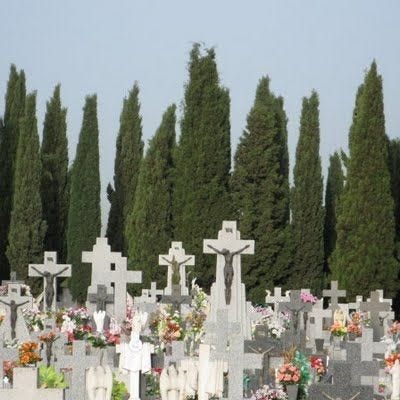Cypress and Myrtle and Cedar...oh my!
Today we chase down the rabbit hole of what different trees symbolize in the Bible.
When you think of the Bible and trees, what do you think of?
My first thought goes to Eden and the garden where God placed the tree of life as well as the tree of the knowledge of good and evil. It’s not possible to say what type of trees these are (it’s not an apple tree, but that’s a rabbit hole for a different day), but they are fruit trees in one sense or another.
The other trees that seem the most prevalent in the Scriptures are cedars, oaks, and olive trees. The cedars of Lebanon are renowned throughout the Old Testament. Oak trees play a roll in several stories including Abraham settling among the oaks of Moreh and Absalom getting his hair caught in an oak tree. Olive trees, olives, and olive oil are a major part of the cultures of God’s people for thousands of years.
But what about cypress and myrtle trees?
As I was preparing sermons for later in the summer, one of the texts I’ll be preaching on is Isaiah 55:10-13. This text mentions God’s gracious action of having cypress and myrtle trees replace thorns and briers.
So it got me thinking. What do these types of trees symbolize in the Bible?
Off the top of my head, I could not think of where either cypress or myrtle trees would be mentioned in the Bible, so I went on a curiosity journey down the rabbit hole of biblical trees. Here’s what I found.
Cypress trees (or their timber) are mentioned 17 times in the Bible, all in the Old Testament. They are often mentioned alongside cedar trees. Solomon put cypress trees to holy purpose in several different places in the first temple. While the walls and ceiling were made of cedar, the floors of the temple were made of cypress. Many doors were made of olivewood in the temple, but two particular doors are made of cypress and covered with ornate decoration in 1 Kings 6:34.
But perhaps the most interesting reference to cypress trees in the Bible is in Hosea 14:8 which reads:
O Ephraim, what have I to do with idols?
It is I who answer and look after you.
I am like an evergreen cypress;
from me comes your fruit.
Here I think lies a bit of a hint as to what cypress trees might symbolize. They are evergreen. But no fruit comes from them. They produce cones, but a quick internet search tells me those are not edible. What does it mean that God is like an evergreen cypress and from Him comes fruit?
Where have you seen cypress trees before? Well one common place is in cemeteries.
While this has led some to associate cypress trees with death, the symbolism behind this is to associate the cypress with everlasting life, not with death. That upon resurrection from the dead, we are surrounded by evergreen cypress trees.
Some have even associated the cypress tree with the tree of life which we see in Genesis 2 and 3 as well as in Revelation 2 and 22. Adam and Eve are barred from access to the tree of life in Genesis 3. In Revelation 22, all who believe in Jesus are granted access to the tree of life in paradise.
It’s as if the cypress tree is both a reminder of everlasting life and the fall. It is evergreen, but it is fruitless. It is the paradox of our life on earth as saints and sinful at the same time.
The myrtle tree is only mentioned six times in the Bible, half of which are in a strange section of Zechariah 1 with a vision of a horseman among the myrtle trees. The section is one of comfort for Judah and Jerusalem of rest and God’s arriving mercy.
The other interesting place myrtle trees are mentioned is as one of the trees God’s people made booths out of for the feast of booths or the feast of tabernacles in Nehemiah 8.
Example of common myrtle tree. Photo © Wendy L Cutler, licensed under CC BY 2.0.
Myrtle trees, like cypresses are evergreen.
Both are mentioned in Isaiah 41 as trees that will appear in the transformed wilderness and desert.
In the end, the mention of cypress and myrtle in Isaiah 55 (the text we started with) as the obviously preferred replacements for thorns and briers is a show of God’s renewed creation. Thorns and thistles are Adam’s punishment in Genesis 3 in the fall (and briers are probably a result of the fall as well, let’s be honest). But in Isaiah 55 (and 41…and in many other places were we see cypress and myrtle trees) we find an evergreen promise, a hint at the tree of life and true paradise returning soon.
Cypresses and myrtles are a type or an incomplete precursor for the tree of life. The tree of life is the greater cypress, the greater myrtle, the greater evergreen tree.
So, the next time you see a cypress or a myrtle, remember the evergreen garden of the new creation where a better evergreen tree—the tree of life—waits for you.
How’s that for a rabbit hole!
Thanks for reading! Share and subscribe!
Stay Curious. Ask Questions.
Andy





